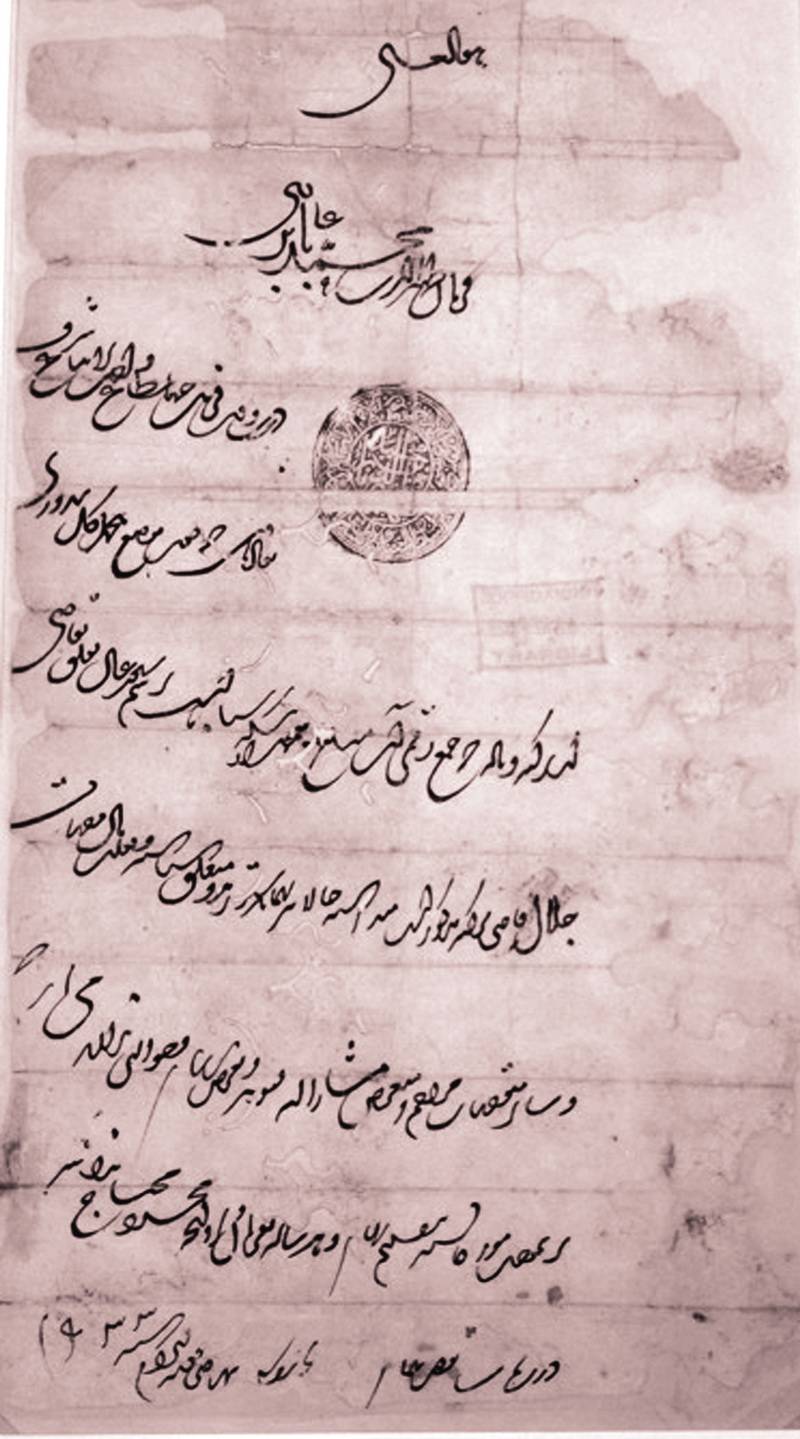
This might be one of the earliest Mughal documents historians have - a land grant from 1527.
It was issued in the name of Ẓahir al-Din Muḥammad Babur Ghazi and confirms the village Panchal Gul Pinduri in the Pargana of Batala, Punjab, as a hereditary grant to the Qazi Jalal al-Din. This decree by Babur was signed sometime in August, a few months after his decisive victory over Rana Sanga of Mewar and his confederates at the battle of Khanwa in March 1527. The revenue of this village amounted to 5,000 copper coins (tankah-i siyah) and was tax-free. The beneficiary was not required to petition annually for the renewal of this grant.
Very few original documents survive from Babur’s reign; some say there are only four. This one is particularly interesting. The early date suggests that under the Mughal rule, a new grant was required to confirm Jalal al-Din in a post which he had probably already held under the Lodhi Sultans of Delhi. The use of the administrative unit parganah, a term for a collection of villages which had been in official use in India from the 14th century, demonstrates the Mughals’ use of an existing administrative structure. However, the grant itself is called a suyurghal, a Mongol term for a hereditary grant. Other new terms used are mutavajihat and mal u jihat, both names of taxes found in documents of the Turkman and Timurid dynasties which ruled much of Iran during the 15th century.
It was issued in the name of Ẓahir al-Din Muḥammad Babur Ghazi and confirms the village Panchal Gul Pinduri in the Pargana of Batala, Punjab, as a hereditary grant to the Qazi Jalal al-Din. This decree by Babur was signed sometime in August, a few months after his decisive victory over Rana Sanga of Mewar and his confederates at the battle of Khanwa in March 1527. The revenue of this village amounted to 5,000 copper coins (tankah-i siyah) and was tax-free. The beneficiary was not required to petition annually for the renewal of this grant.
Very few original documents survive from Babur’s reign; some say there are only four. This one is particularly interesting. The early date suggests that under the Mughal rule, a new grant was required to confirm Jalal al-Din in a post which he had probably already held under the Lodhi Sultans of Delhi. The use of the administrative unit parganah, a term for a collection of villages which had been in official use in India from the 14th century, demonstrates the Mughals’ use of an existing administrative structure. However, the grant itself is called a suyurghal, a Mongol term for a hereditary grant. Other new terms used are mutavajihat and mal u jihat, both names of taxes found in documents of the Turkman and Timurid dynasties which ruled much of Iran during the 15th century.

